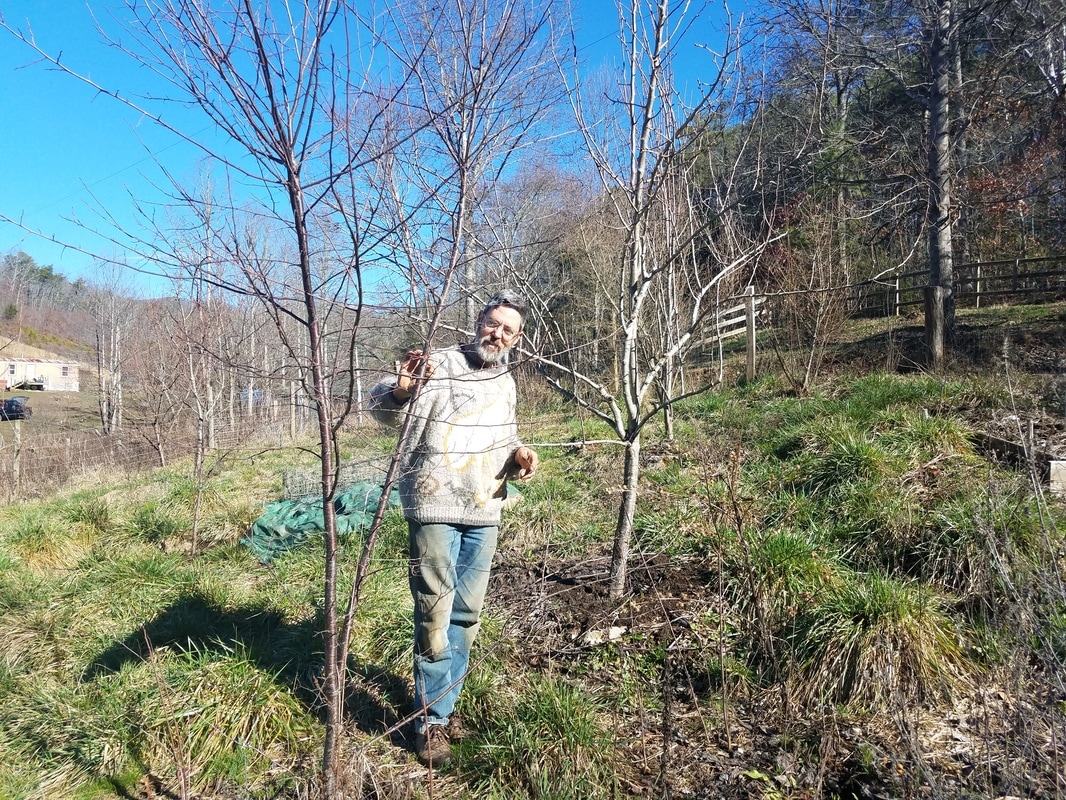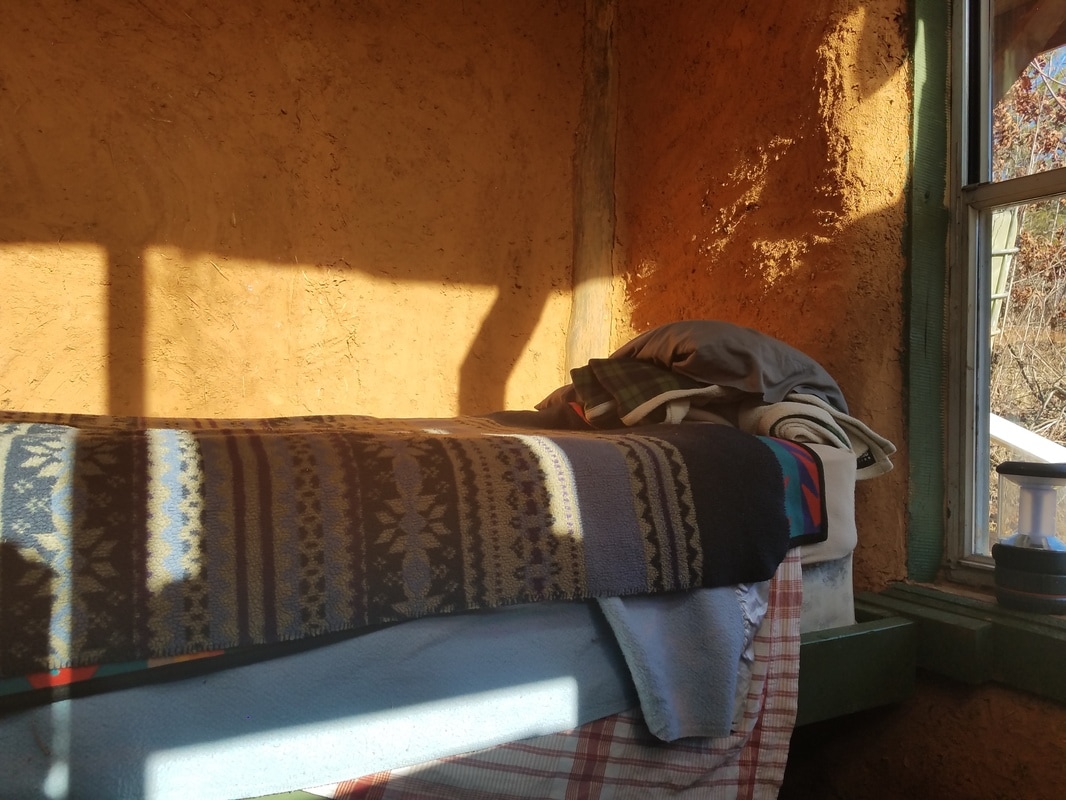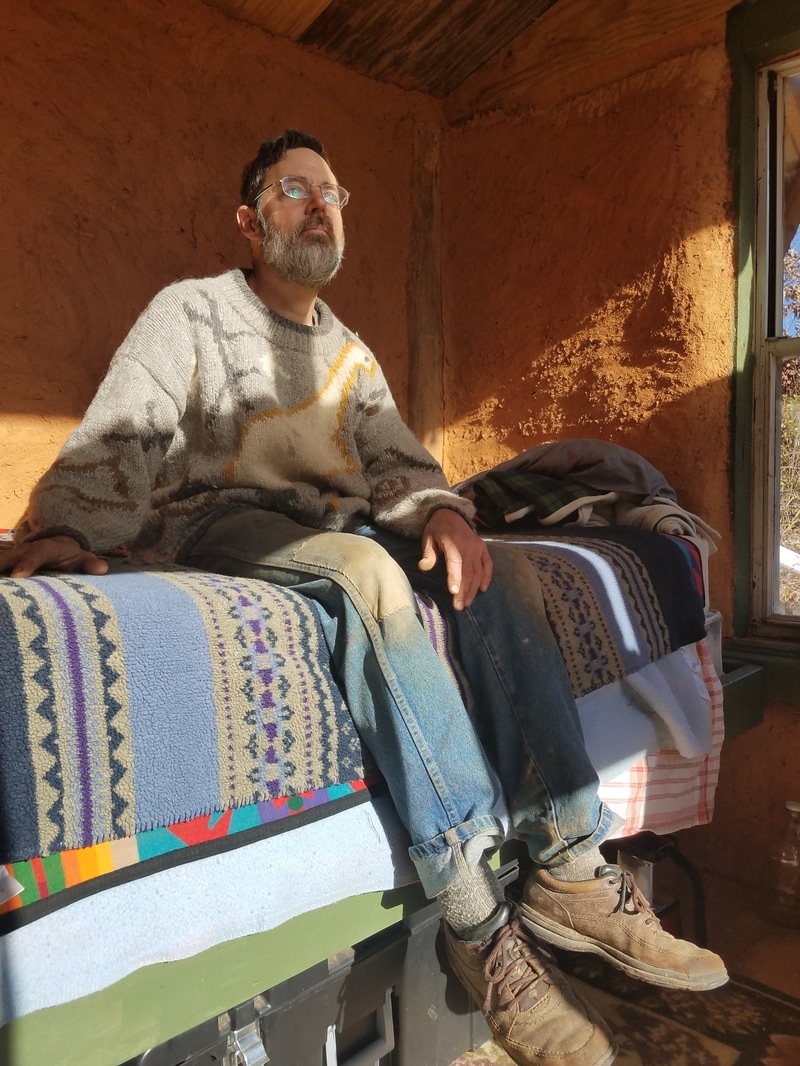|
A few weeks ago I had the opportunity to visit an old friend of mine, and a great mentor, Jeff Gottlieb. He has been working on his amazing tiny homestead for the past 5 years, and I, being a terrible friend, haven't visited yet. We got to check out all the amazing things he's been working on, nerd out about net making and spoon carving, and oh so many other things. Jeff has been an educator for along time. He's an accomplished naturalist, a wigwam builder, a spoon carver, and a historic artifact reproduction extraordinaire. We met through the Earth skills Rendezvous about 7 years ago. Since then, his contagious smile, matter-of-fact teaching style and silly pun-filled sense of humor have made him indispensable. Jeff has been working on many things, but his Kudzy Kabin is perhaps his claim to fame. This adorable little house is not make of strawbale, its Kudzu bale. Imagine a home made from a plant so detested and deemed useless, invasive and otherwise hated. He has made the second one known in the US, though let me know if you've made one and I'm not aware. Still under construction, but it is so cute! The miraculous thing is, some of this clay was made with elephant dung. Can you spot the elephant head on the right side wall? Here, take a closer look. You can see the lovely red, Carolina clay and tulip poplar bark siding about the soon to be door. The inside is even sweeter. He told me about the stained glass window he and his mother made and we laughed about the problems of carving spoons inside. We are both guilty of making wood chips where ever we go. His lovely greenhouse he shares with a neighbor. Comfrey and day lillies. Wild food grows everywhere.  He has the sweetest mini-orchard full of plums, cherries, asian pears and much more. Tool Envy is a thing. And I have it. Making dogbane cordage for net making. Jeff has woven huge dogbane nets as replicas for museums. Making replicas of historical, and pre-historical in some cases, objects is a source of fun and livelihood for him. I also teach net making now and I learned 7 years ago how to make cordage from Jeff. The passing and dissemination of these skills among and beyond our community is part of the reason I love it so much. The dogbane plant was a major source of fiber for First Nations people in our bioregion. It is my favorite of the fiber plants here in Appalachia. Notice all the little fibers waiting to be stripped out. Knapped blue glass arrow heads. We finished our visit by digging ground nuts (Apios americana). This is a delicious tuber of substantial caloric content: a rarity among our non-nut wild foods. Cook and eat like potatoes! We dug up lots of them with ease in the moist soil along the edge of Jeff's garden. "Apios!" He cried as he pulled them from the Earth. We laughed and he filled a black plastic planting pot with them for me and I headed on home. A lovely day with a dear multitalented friend. I love when wild foods, primitive skills, friends and magical homesteads all blend into a super sweet day.
5 Comments
Lisa-Jo
3/30/2017 02:30:18 pm
Wonderful! Thank you for posting. Jeff doesn't toot his own horn often! Spring is in his step and in the air.
Reply
3/30/2017 09:52:42 pm
Long Island misses you Jeff! Thinking back fondly of the many staff trainings you provided to the "Nats". Enjoyed the article ...Be well!
Reply
Angela Gottlieb
3/31/2017 07:48:05 am
This is such a comprehensive tale of my son, Jeff. We are proud to be his mom and dad
Reply
mary schwartz
4/1/2017 08:37:41 pm
So love reading this and seeing the pictures. Jeff worked in my classroom for many years and touched the lives of many students in Shoreham. I meet young men and women around town who are grown now with their own children and they remember when Jeff visited our class and taught native technology. I know I've never looked at dogbane the same since!
Reply
Leave a Reply. |
Archives
April 2024
To support me in my research and work, please consider donating. Every dollar helps!
|


















 RSS Feed
RSS Feed
